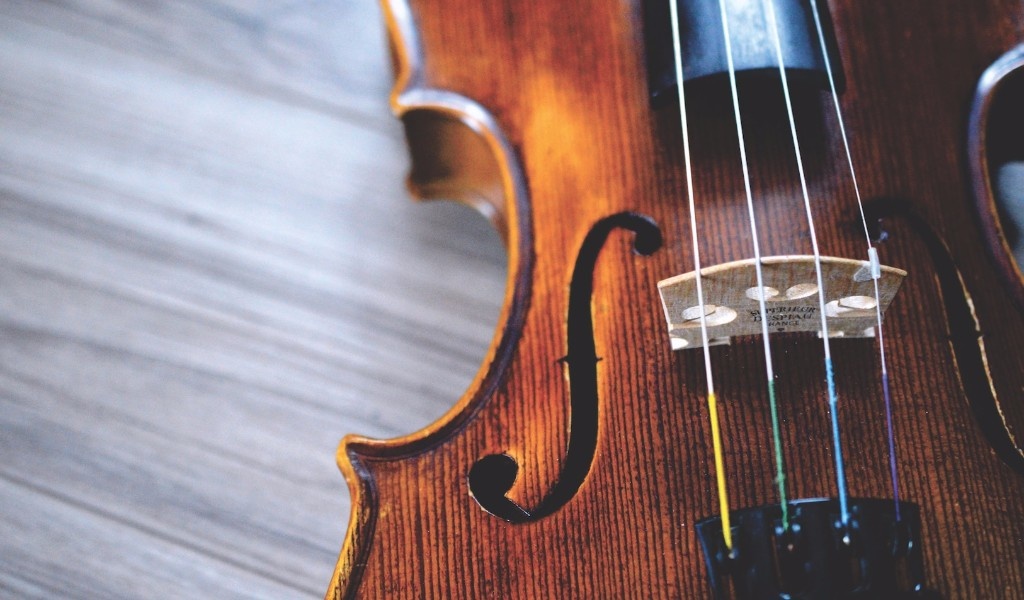
You might be trying to find a violin for the very first time as a beginner, or you may be upgrading to a finer instrument after playing for a long time. Here are some tips you can refer to:
1. PRICE
Decide on a budget. It does not mean that a higher priced violin would be better always. It is best to go to the shop yourself and physically be there to choose the violin of your choice than to leave it solely to a music teacher to do so. You will be able to tell and decide on the sound from one violin to another even if you have no instincts in classical music whatsoever. It is like art, where you can see if it is a painting that you like versus another painting that you may not be so keen on.
2. APPEARANCE
Colour and lines
It is important that you like the way your violin looks. There are many shades of varnish your violin could be in, some skew to being more reddish, some brown, dark brown or even orange. The varnish colour does not affect the sound at all but if you are a first timer on this instrument you may want to choose something pleasing to your eyes.
Cracks and Chips
It is important that you check around for any cracks or chips as these can be repaired easily and cheaply whereas some are hefty sums which may be not be worth getting that particular violin in the end.
Check that everything is Symmetrical
Next, check if the fingerboard is straight and glued on well and if you are getting a second hand violin, make sure that the fingerboard is not too worn out. Make sure that the ƒ holes are symmetrical on the same level.
Bridge
This is the most common problem but can be rectified at the music shop prior to buying. A bridge should not be too high or too low as this will affect the sound of the violin. Too low you may have buzzing noise as you play on the higher registers and too high, the tension of pressing the strings onto the fingerboard may be too great. The angle of the four strings should also be evenly spaced. The bridge should be in a rather gradual curve gradient so that all four strings can be played with ease.
Pegs and Fine Tuners
Make sure that these are well lubricated and move smoothly and able to stay in place.
3. SOUND
The violin's sound is as important in your decision to choose a violin if not more than it is aesthetically. If you have had some lessons or able to bow the violin, you should pluck the strings to see if the pizzicato sound is something you like. The feel of the violin is important, so bow some open strings to check and see if you like the feel and sound of the resonance. Get someone at the shop if possible to play a few tunes and compare with the shortlisted ones you have chosen.
4. CHINREST
These come in all different shapes and sizes, choose one which is comfortable and fits your neck and chin profile.
5. BOW
Not all violins would come with their bows. The bow sometimes can be as expensive as the violin. It is important to choose a good and suitable bow as the quality would affect the sound of the violin. You may want to play through the range of bows at the shop to see what is the best match for your violin. (If you know how to test different bowings besides a Detaché bow stroke such as Spiccato and Ricochet bowings, it would be even better) While buying a bow, make sure that it is straight and that the hairs are not too old. If they are, do get the shop to rehair the bow before purchasing. Also you want to check for cracks as some major cracks, especially to the tip area may make the bow not sound for playing as it would be a matter of time that the bow cracks completely and breaks apart.
CONCLUSION
It is important to choose a violin and bow that you are comfortable with both the sound and the look of it. Do be careful especially when choosing an antique second hand instrument with high costs as you would want to make sure it is a worthwhile buy. Do adequate research in handbooks on makers and over the internet before your purchase and get an appraisal and certification if possible. If buying a new violin. It is best to see and test a good range of violins before purchasing. It is not always that an expensive instrument would meet your ideal sound as one that is not as expensive.
For more helpful tips and tricks on the violin, visit their website at www.belcantoviolins.com/blog
This is a guest post written by Vivienne Eio. Check out their Professional Private Violin Lessons.
Want to guest blog for LGW? Check out the details here.